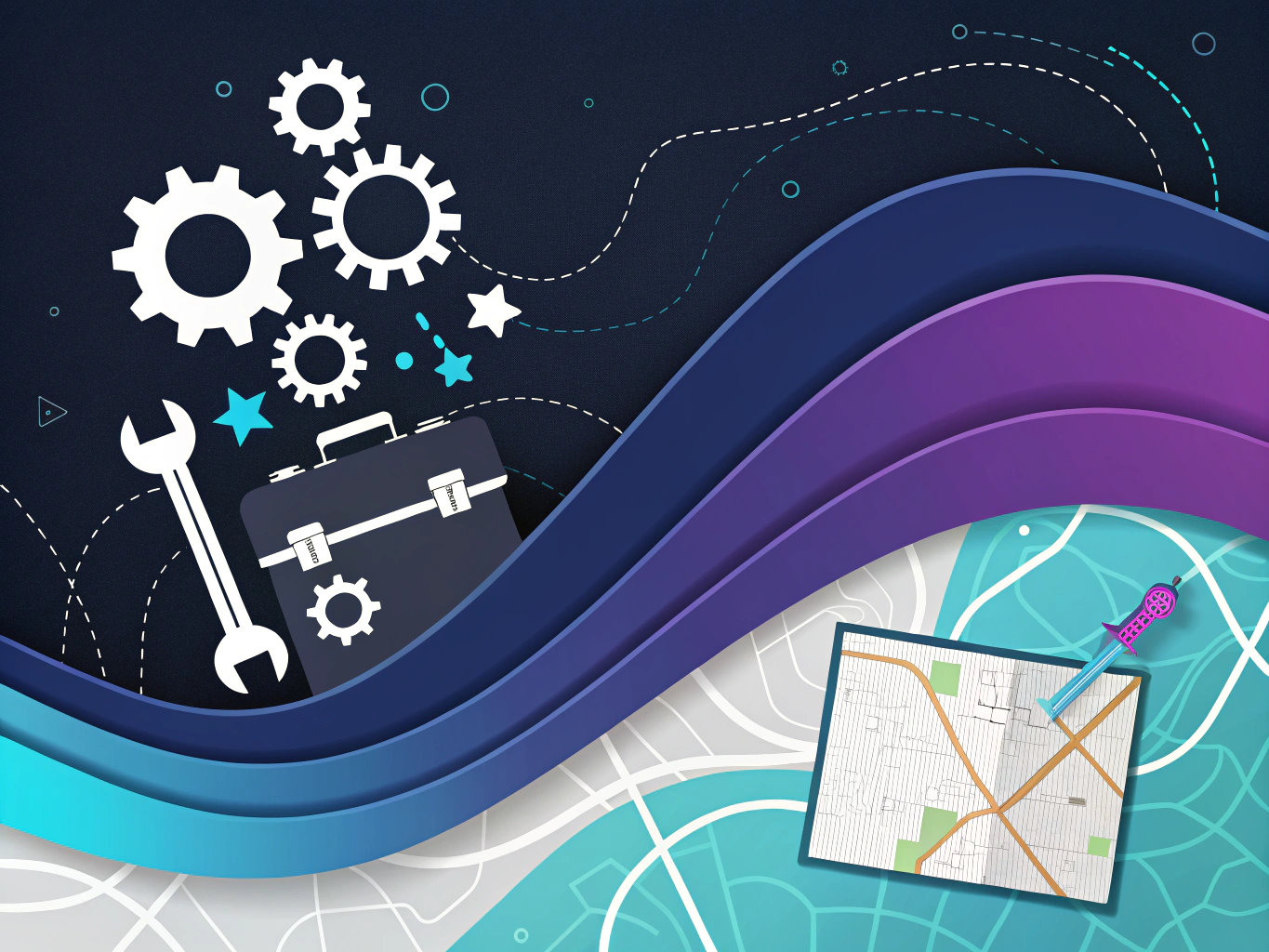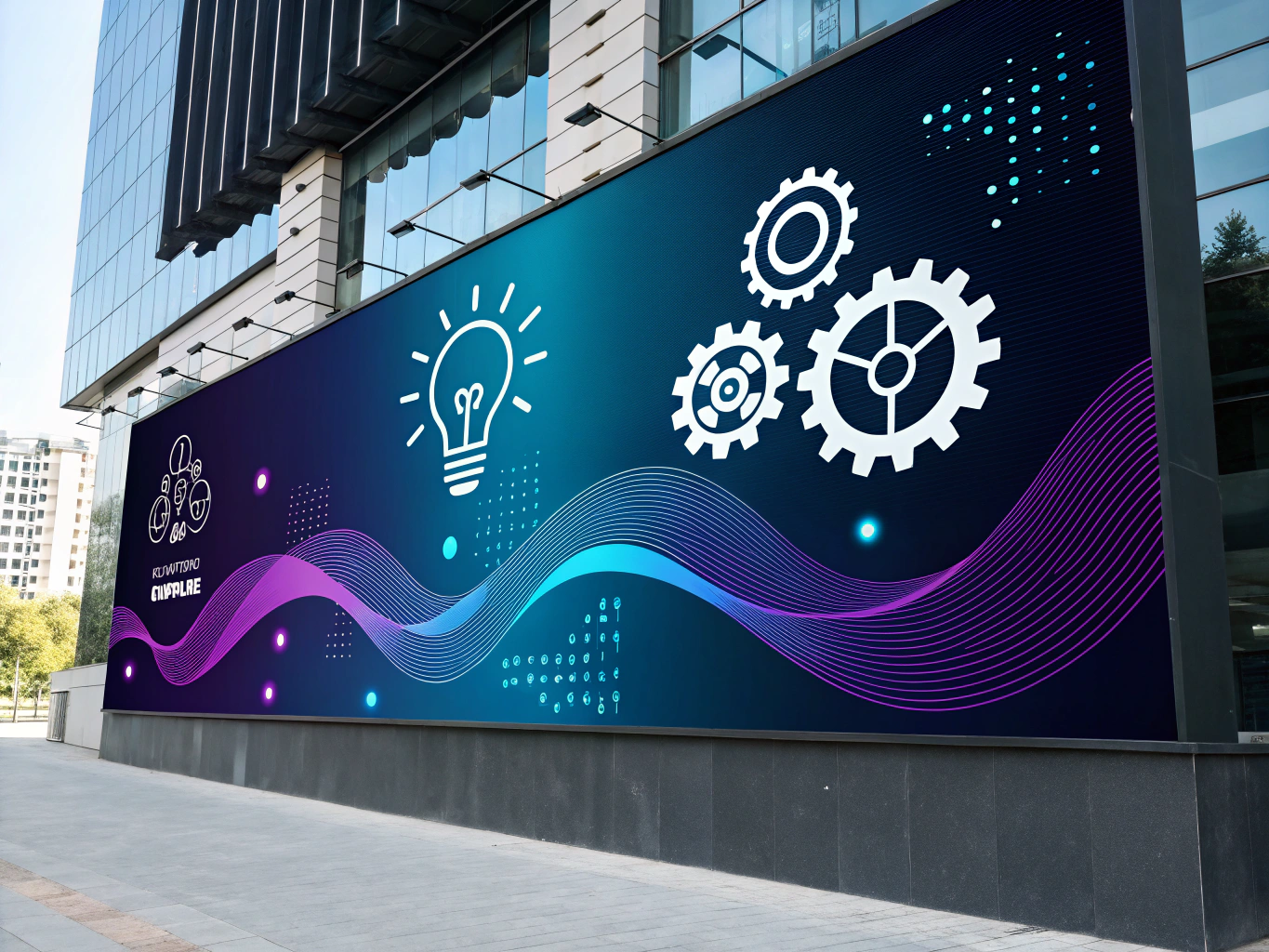Remember when Clippy, that annoying paperclip from Microsoft Office, was our idea of AI assistance? We’ve come a long way since then—though sometimes I wonder if we’ve overcorrected in the opposite direction. These days, the term “AI assist” gets thrown around like confetti at a New Year’s party, attached to everything from your coffee maker to your cat’s automatic feeder.

But here’s the thing: beneath all the hype and fear-mongering about artificial intelligence taking over the world, there’s a profound transformation happening in how we work, create, and solve problems. It’s not about AI replacing humans—it’s about AI becoming our surprisingly capable intern who’s really good at handling the grunt work while occasionally surprising us with brilliant insights.
Understanding AI Assist: More Than Just a Fancy Calculator
When we talk about AI assist technology, we’re not just talking about a more sophisticated version of autocorrect (though that’s part of it). We’re talking about systems that can understand context, learn from patterns, and adapt to our needs in ways that would’ve seemed like science fiction just a few years ago.
Think of AI assist as your personal production team, research department, and analysis unit all rolled into one. It’s like having a super-powered Swiss Army knife for your digital tasks—except this one learns and gets better the more you use it.
The Evolution: From Rule-Based to Neural Networks
The journey from Clippy to ChatGPT isn’t just a story of technological advancement—it’s a fundamental shift in how machines understand and interact with us. Early AI assistants were like those old choose-your-own-adventure books: they followed pre-written scripts and could only respond to specific triggers. Modern AI assists, powered by neural networks, are more like improv actors who can handle unexpected situations and generate creative responses on the fly.
Types of AI Assist Solutions That Actually Work

Let’s cut through the noise and look at AI assist tools that aren’t just marketing fluff. I’ve tested hundreds of these tools (occupational hazard of running an AI company), and I can tell you: some are game-changers, while others are just fancy interfaces slapped onto basic automation.
Enterprise Integration Solutions: The Heavy Lifters
Enterprise integration might sound about as exciting as watching paint dry, but it’s where some of the most impressive AI assist capabilities are happening. Tools like Exalate are fundamentally changing how businesses handle complex data workflows. They’re like digital traffic controllers for your business processes, making sure everything flows smoothly between different systems.
What makes these solutions particularly powerful is their ability to learn from patterns in your data flow. Imagine having an assistant who not only remembers how you like your coffee but also anticipates when you’ll want it based on your meeting schedule, energy levels, and past behavior patterns. That’s what we’re talking about here, but for your business processes.
Legal and Contract Management: The Fine Print Readers
If you’ve ever had to review a 50-page contract (and who hasn’t in the ecommerce world?), you’ll appreciate this one. AI-powered contract review tools like Ironclad don’t just scan documents—they understand them. They can flag potential issues, suggest improvements, and even predict possible points of contention based on historical data.
The ROI here isn’t just in time saved; it’s in risk mitigation. One missed clause in a supplier agreement can cost an ecommerce business thousands. These AI assists act like having a team of veteran lawyers who’ve seen every trick in the book and never get tired.
Productivity and Communication Tools: The Daily Drivers
This is where most of us interact with AI assist technology daily, often without realizing it. From writing assistance platforms that polish our prose to coding assistants that complete our functions, these tools are like having a second brain that specializes in the tasks we find most tedious.
But here’s what most people miss: the best AI writing assistants aren’t just spell-checkers on steroids. They’re context-aware collaborators that can help maintain your brand voice across thousands of product descriptions or generate variations of ad copy that actually convert. For ecommerce brands, this isn’t just convenient—it’s a competitive advantage.
Implementation Strategies That Won’t Make You Pull Your Hair Out
Let’s be real: implementing new technology can feel like trying to teach your grandparents how to use TikTok. But it doesn’t have to be that way. The key is understanding that AI assist implementation is more about people than technology.
Technical Integration: Making the Pieces Fit
The technical side of AI assist integration often gets overcomplicated. Yes, API connectivity and security considerations matter, but they’re not the whole story. Think of it like building with LEGO—you need the right pieces (APIs), a solid foundation (security), and a clear picture of what you’re building (scalability planning).
What’s often overlooked is the importance of starting small. You don’t need to integrate AI assist into every aspect of your business at once. Start with one process, one department, or even one specific task. It’s like dating—you want to get to know each other before making any big commitments.
User Adoption: The Human Side of AI
Here’s where most AI implementations fall flat: they forget about the humans. You can have the most sophisticated AI assist system in the world, but if your team sees it as a threat or a hassle, it’s about as useful as a chocolate teapot.
The secret? Make it personal. Show your team how AI assist can make their specific jobs easier, not just how it benefits the company. When I’m training teams on new AI tools, I always start with the most annoying, time-consuming part of their job and show how AI can handle it. Suddenly, resistance turns into curiosity, and curiosity turns into adoption.
Industry-Specific Applications: Where the Rubber Meets the Road

Different industries are leveraging AI assist in fascinating ways, and the applications are as diverse as the businesses themselves. Let’s break down how AI is transforming specific sectors, starting with healthcare—because if AI can help save lives, it can probably help sell your products too.
Types of AI Assist Solutions: The Good, The Bad, and The “Why Didn’t Anyone Tell Me About This Sooner?”
Let’s cut through the noise here. While everyone’s talking about ChatGPT and DALL-E, there’s a whole ecosystem of AI assist tools that are quietly revolutionizing how we work. And no, I’m not talking about the flashy stuff that makes headlines – I mean the nitty-gritty, roll-up-your-sleeves kind of tools that actually make a difference in your daily grind.
Enterprise Integration Solutions: Where the Magic Actually Happens
Remember when integrating two software systems was like trying to teach a cat to speak French? Those days are (mostly) behind us. Tools like Exalate are using AI assist to make complex integrations feel more like plugging in a USB cable – okay, maybe on the second or third try, but you get the point.
I’ve seen firsthand how AI-powered integration frameworks are transforming what used to be weeks of custom coding into something that happens over a lunch break. The real kicker? These systems are getting smarter about data flow management. They’re like traffic controllers for your information, but instead of getting grumpy and going on strike, they just keep getting better at their job.
Legal and Contract Management: Because Nobody Actually Enjoys Reading Terms of Service
Here’s something wild: Ironclad’s AI can read and analyze a 50-page contract faster than you can say “where do I sign?” But it’s not just about speed – it’s about catching those sneaky clauses that would have had you kicking yourself months later.
What really gets me excited is how these tools are democratizing legal expertise. Small ecommerce brands that couldn’t afford a legal team can now run their contracts through AI systems that flag potential issues with the accuracy of a seasoned lawyer (minus the billable hours).
How AI Assist is Transforming Productivity Tools

If you’re still using productivity tools the same way you did five years ago, you’re probably working harder than you need to. The integration of AI assist into our daily tools has been nothing short of transformative – and I’m not just throwing that word around because it sounds good.
Writing Assistance: Beyond Grammar Checking
Remember when spell check was revolutionary? (If you don’t, congratulations – you’re young.) Today’s AI writing assistants are like having a writing partner who never sleeps, never gets cranky, and has somehow read every style guide ever written.
But here’s what’s really interesting: these tools aren’t just fixing your grammar anymore. They’re learning your voice, understanding your brand’s tone, and helping you maintain consistency across all your content. For ecommerce brands, this means being able to maintain a consistent voice across product descriptions, social media, and email campaigns without needing a small army of copywriters.
Coding Assistance: The Developer’s New Best Friend
As someone who still occasionally dabbles in code (old habits die hard), I can tell you that modern coding assistants are mind-blowing. They’re not just autocompleting your brackets – they’re understanding entire code patterns and suggesting solutions that actually make sense.
GitHub Copilot and similar tools have become so good that they’re essentially pair programming partners who never need coffee breaks. They’re particularly game-changing for ecommerce developers working on custom storefronts or integrations.
Implementation Strategies That Actually Work
Here’s where the rubber meets the road. I’ve seen too many companies jump into AI assist implementation like it’s a pool on a hot day – without checking the depth first.
Technical Integration: The Part Everyone Wants to Skip (But Shouldn’t)
API connectivity isn’t sexy. Security considerations aren’t exciting. Scalability planning probably won’t get you likes on LinkedIn. But these are the foundations that determine whether your AI assist implementation will be a success story or a cautionary tale.
The key is starting with a clear understanding of your current infrastructure and where AI can actually add value. It’s like renovating a house – you need to know which walls are load-bearing before you start swinging the sledgehammer.
User Adoption: The Human Side of AI
Here’s a truth bomb: The best AI assist implementation in the world is worthless if your team won’t use it. I’ve seen companies spend millions on AI tools that ended up being expensive digital paperweights because they forgot about the human element.
Success in user adoption comes down to three things: proper training, clear communication about the benefits, and a realistic timeline for implementation. It’s about showing people how AI assist makes their jobs easier, not about forcing them to adapt to new tools just because they’re shiny and new.
Industry-Specific Applications: Where the Rubber Meets the Road
Different industries are leveraging AI assist in fascinating ways, and the results are starting to show. Let’s break down some of the most impressive applications I’ve seen.
Healthcare: More Than Just Fancy Chatbots
In healthcare, AI assist is doing everything from optimizing patient care schedules to helping with diagnostic decisions. But what really gets me excited is how it’s handling medical record management. We’re talking about systems that can read doctors’ notoriously bad handwriting (a feat that deserves its own Nobel Prize, if you ask me) and turn it into actionable data.
The compliance automation aspect is particularly impressive. These systems are keeping track of ever-changing healthcare regulations and ensuring everything stays within guidelines – something that used to require entire teams of people.
Financial Services: Money Talks, AI Listens
The financial sector has always been an early adopter of technology, but what’s happening now with AI assist is next level. Risk assessment algorithms are processing more data points than a human could evaluate in a lifetime, and they’re doing it in seconds.
Fraud detection systems have become so sophisticated that they can spot potential issues before they become problems. It’s like having a security team that can see into the future – minus the crystal ball and mysterious fog.
Advanced Features and Capabilities: The Cool Stuff That Actually Matters
Let’s talk about what’s under the hood of modern AI assist systems. And no, I promise this won’t be a technical snoozefest.
Natural Language Processing: Teaching Machines to Speak Human
The evolution of NLP has been fascinating to watch. We’ve gone from basic keyword matching to systems that can understand context, sentiment, and even sarcasm (though they’re still not great at dad jokes). The multilingual support capabilities are particularly impressive – these systems can now handle nuanced translations that would have been gibberish just a few years ago.
For more insights on how AI is evolving in 2023, check out the World Economic Forum’s predictions.
Machine Learning Components: The Brain Behind the Operation
Pattern recognition in modern AI assist systems has reached a point where it’s starting to feel like magic. These systems aren’t just learning from data – they’re identifying patterns that humans might never notice. The adaptive learning capabilities mean they’re getting smarter with every interaction, which is both exciting and slightly terrifying if you think about it too much.
What’s really interesting is how these systems are optimizing their own performance. They’re like self-improving employees who never ask for a raise or take vacation days.
Security and Privacy: The Stuff Nobody Wants to Talk About (But We Have To)

Look, I know security isn’t the most exciting topic, but it’s like wearing a seatbelt – you don’t think about it until you really need it.
Data Protection: Because Trust is Hard to Earn and Easy to Lose
The encryption protocols and access control mechanisms in modern AI assist systems are robust, but they’re only as good as the people using them. It’s like having a state-of-the-art home security system but leaving your front door open – all the technology in the world won’t help if you don’t use it properly.
What’s particularly interesting is how AI assist is being used to enhance security itself. These systems can monitor access patterns and flag suspicious activities faster than any human security team.
Risk Management: Preparing for the What-Ifs
The best AI assist implementations include comprehensive risk management strategies. This isn’t just about running security assessments and vulnerability tests – it’s about having solid incident response plans and recovery procedures in place.
Think of it like insurance – you hope you never need it, but you’ll be really glad you have it if something goes wrong. The key is finding the right balance between security and usability. Too much security can make systems unusable; too little can make them vulnerable.
Advanced Features and Capabilities of AI Assist
Look, I’ve spent countless hours working with AI systems, and let me tell you something fascinating: they’re a lot like those universal translators from Star Trek. Remember how those devices could somehow make sense of completely alien languages? That’s essentially what modern AI assist technology is doing with our data – translating the chaos of information into something meaningful.
The real magic happens in two key areas: Natural Language Processing (NLP) and Machine Learning. And trust me, this isn’t just tech jargon – these are the engines that make AI assist actually, well, assistive.
Natural Language Processing: The Universal Translator
Think of NLP as your AI’s ear and mouth – it’s how it understands and communicates with us. But it’s not just about understanding words; it’s about getting context. When you’re running an ecommerce store and asking your AI assistant to analyze customer reviews, it’s not just counting stars – it’s understanding the sentiment behind “This product is sick!” (Is that good or bad? Context matters!).
The coolest part? Modern NLP systems can:
– Pick up on emotional undertones in customer feedback
– Handle multiple languages (perfect for global brands)
– Understand industry-specific jargon
– Recognize patterns in how people talk about your products
To understand how AI will transform the way we work, explore HBR’s analysis.
Machine Learning: The Brain That Never Stops Learning
Here’s where things get really interesting. Machine learning components in AI assist systems are like interns who actually remember everything you teach them – and keep getting better. They’re constantly analyzing patterns, making predictions, and optimizing their performance.
For ecommerce brands, this means your AI assistant gets better at:
– Predicting inventory needs based on historical data
– Optimizing product descriptions for different markets
– Personalizing customer communications
– Spotting trends before they become obvious
For more on the current state of AI, see the McKinsey report.
Security and Privacy: The Elephant in the Room

Let’s talk about something that keeps many of us up at night – security. As someone who’s built AI systems for ecommerce, I can tell you that data protection isn’t just a checkbox – it’s the foundation everything else sits on.
Data Protection That Actually Works
Remember the Target data breach? Yeah, none of us want that. Modern AI assist platforms need military-grade encryption, strict access controls, and regular security audits. But here’s the thing – security isn’t just about having strong locks; it’s about knowing who has the keys.
Your AI assist system should be:
– Encrypted end-to-end (not just in transit)
– Compliant with relevant regulations (GDPR, CCPA, etc.)
– Regularly audited for vulnerabilities
– Transparent about data usage
Future Developments: Where We’re Headed
This is where my inner sci-fi geek gets excited. The future of AI assist isn’t just about better algorithms – it’s about fundamentally changing how we work. We’re seeing the emergence of multimodal AI that can understand images, text, and voice simultaneously. Imagine an AI assistant that can look at your product photos, read your customer feedback, and help you create perfect marketing campaigns – all while understanding the nuances of your brand voice.
The Next Wave of Innovation
Some mind-blowing developments on the horizon:
– Quantum computing applications that could process complex data in seconds
– Edge computing implementation for faster, more secure processing
– Blockchain integration for transparent supply chains
– AI systems that can explain their decision-making process
Best Practices: Doing AI Assist Right
After working with countless brands, I’ve learned that successful AI assist implementation isn’t about having the fanciest tools – it’s about having the right strategy. It’s like building a house: you need a solid foundation before you start picking out curtains.
Implementation That Actually Works
Start with these fundamentals:
– Assess your actual needs (not just what’s cool)
– Allocate resources realistically
– Set clear, measurable goals
– Train your team properly
Measuring Success: Beyond the Buzzwords
Here’s something I tell all my clients: if you can’t measure it, you can’t improve it. But measuring AI assist success isn’t just about ROI – it’s about understanding the full impact on your business.
The Metrics That Actually Matter
Focus on:
– Time saved on routine tasks
– Accuracy improvements in predictions
– Customer satisfaction scores
– Team adoption rates
Challenges and Solutions: Real Talk
Let’s be honest – implementing AI assist isn’t all sunshine and rainbows. I’ve seen companies struggle with everything from technical integration to user resistance. But here’s the thing: every challenge has a solution.
Common Pitfalls and How to Avoid Them
The biggest challenges I’ve seen:
– Technical integration issues (solution: start small, scale gradually)
– User resistance (solution: involve teams early in the process)
– Data quality problems (solution: clean your data before implementation)
– Unrealistic expectations (solution: set clear, achievable goals)
Future-Proofing Your AI Implementation
The AI landscape changes faster than fashion trends in New York (trust me, I live here). Future-proofing isn’t about predicting the future – it’s about building systems flexible enough to adapt to change.
Building for Tomorrow
Key considerations:
– Scalable infrastructure that can grow with you
– Flexible integration points for new technologies
– Regular training and updates for your team
– Clear documentation of processes and decisions
Conclusion: The Human Element
After all this talk about AI assist technology, here’s what really matters: it’s still about people. AI isn’t replacing human creativity and decision-making – it’s amplifying it. The most successful implementations I’ve seen are those that remember this fundamental truth.
The future of AI assist isn’t about creating artificial intelligence that mimics humans perfectly – it’s about creating tools that make us better at being human. That means better decision-making, more time for creativity, and stronger connections with our customers and teams.
As we wrap up this guide, remember: AI assist technology is just a tool. A powerful tool, yes, but still just a tool. The magic happens when you combine it with human insight, creativity, and purpose. That’s when you’ll see not just transformation, but genuine innovation in how you work and serve your customers.
And isn’t that what we’re all really after?
👉👉 Create Photos, Videos & Optimized Content in minutes 👈👈
Related Articles:
- ProductScope Pricing: Choose the Right Plan
- Top GPT-4o Assistants for Business | ProductScope AI
- The Power of CHATGPT: How It Can Boost Your Amazon Marketing
Frequently Asked Questions
How does ai assist in optimizing for voice search?
AI assists in optimizing for voice search by analyzing natural language patterns and user intent to improve search engine algorithms. It helps in understanding the nuances of spoken language, which often differs from typed queries, and refines the content to match conversational tones. Furthermore, AI can predict and suggest long-tail keywords that align with voice search queries, enhancing the likelihood of content being discovered through voice-activated devices.
How to use ai to assist in write a book?
AI can assist in writing a book by providing creative prompts, generating text based on specific themes, and suggesting plot developments. It can analyze large datasets of existing literature to offer stylistic suggestions and help with grammar and editing. Additionally, AI tools can be used to outline chapters and develop character profiles, ensuring consistency and coherence throughout the manuscript.
What is ai assist?
AI assist refers to the use of artificial intelligence technologies to aid humans in performing various tasks more efficiently and effectively. It encompasses a wide range of applications, from automating routine tasks and providing data-driven insights to enhancing decision-making processes. AI assist tools leverage machine learning, natural language processing, and other AI techniques to augment human capabilities across different fields.
How do ai models assist medical coders in making informed decisions when assigning codes?
AI models assist medical coders by analyzing patient records and suggesting the most accurate medical codes based on the documented diagnoses and treatments. These models use natural language processing to understand medical terminology and context, reducing the chances of errors and omissions. By automating repetitive tasks and highlighting potential discrepancies, AI helps coders focus on more complex coding decisions and ensures compliance with coding standards.
In the it industry how can generative ai assist in code completion and software development?
In the IT industry, generative AI can significantly enhance code completion by predicting and suggesting code snippets as developers type, improving efficiency and reducing errors. It can also assist in automating repetitive coding tasks, generating boilerplate code, and even creating prototypes from high-level specifications. Moreover, generative AI can analyze existing codebases to offer refactoring suggestions, enhancing software quality and maintainability.
About the Author
Vijay Jacob is the founder and chief contributing writer for ProductScope AI focused on storytelling in AI and tech. You can follow him on X and LinkedIn, and ProductScope AI on X and on LinkedIn.
We’re also building a powerful AI Studio for Brands & Creators to sell smarter and faster with AI. With PS Studio you can generate AI Images, AI Videos, Chat and Automate repeat writing with AI Agents that can produce content in your voice and tone all in one place. If you sell on Amazon you can even optimize your Amazon Product Listings or get unique customer insights with PS Optimize.
🎁 Limited time Bonus: I put together an exclusive welcome gift called the “Formula,” which includes all of my free checklists (from SEO to Image Design to content creation at scale), including the top AI agents, and ways to scale your brand & content strategy today. Sign up free to get 200 PS Studio credits on us, and as a bonus, you will receive the “formula” via email as a thank you for your time.
